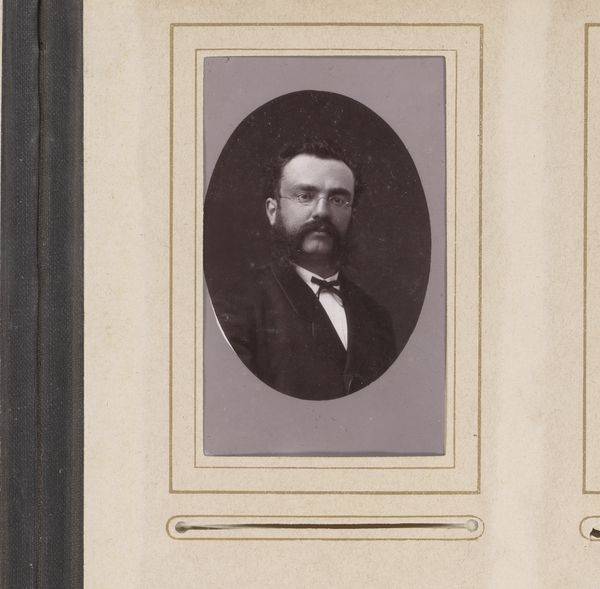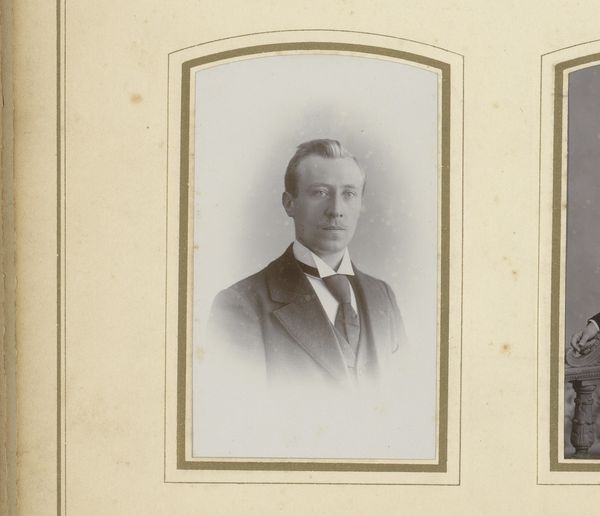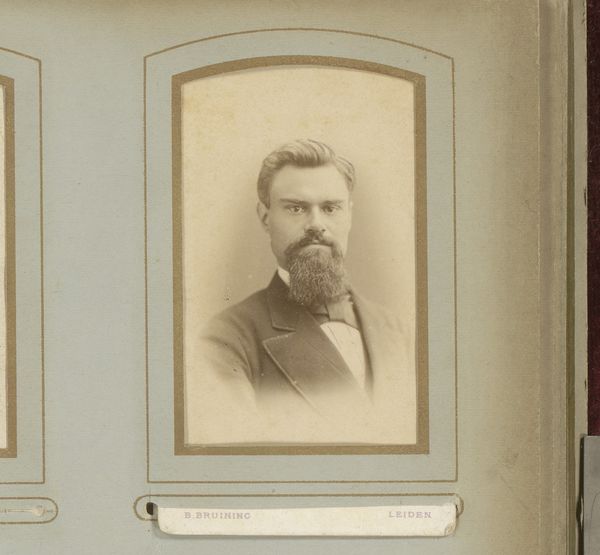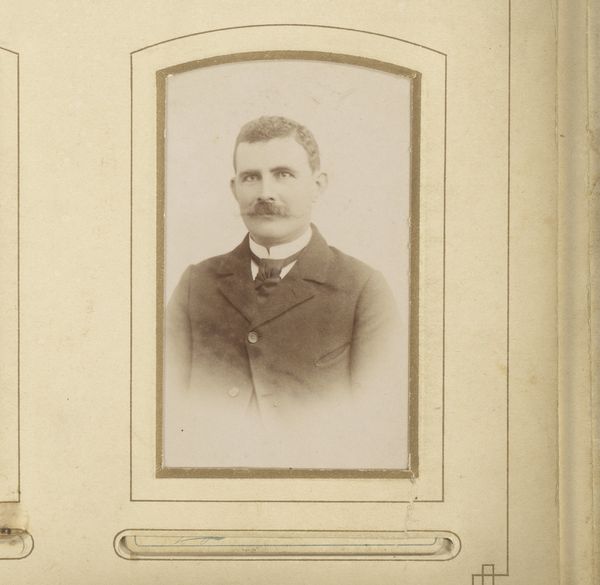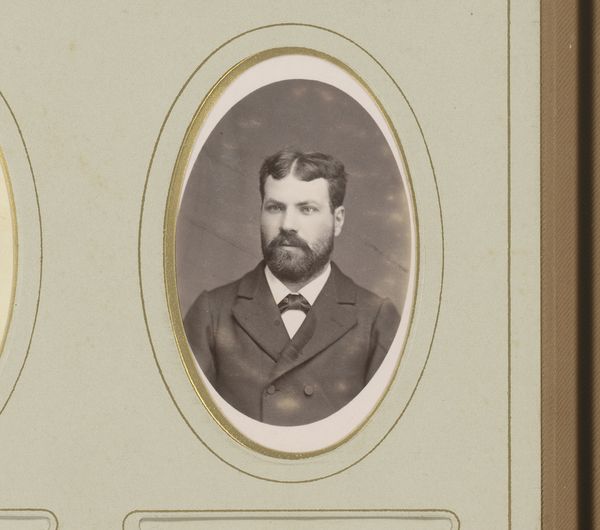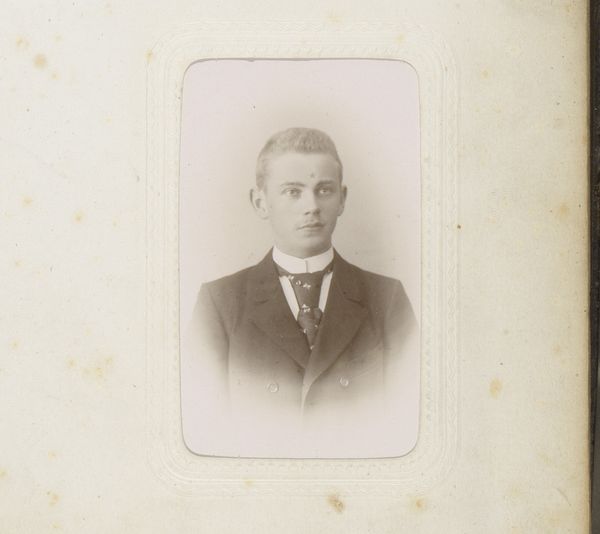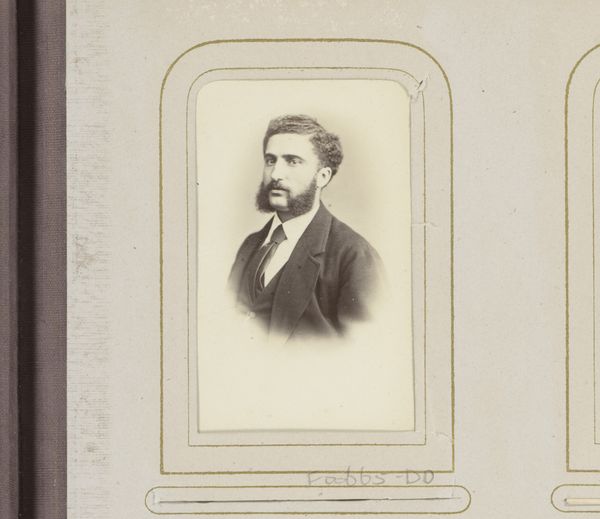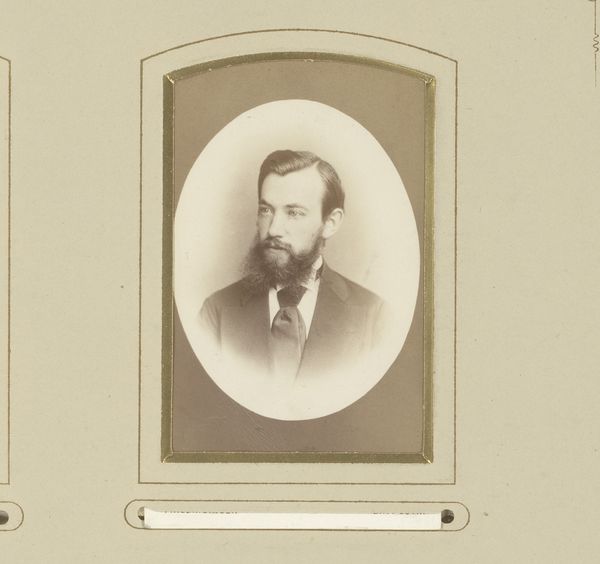
Dimensions: height 87 mm, width 53 mm
Copyright: Rijks Museum: Open Domain
Curator: Here we have "Portret van een man met snor en baard," or "Portrait of a man with a moustache and beard," a gelatin-silver print, estimated to be created between 1886 and 1902 by Willem Bernard Bekkering. Editor: It feels incredibly intimate, even though it’s just a simple head and shoulders shot. The blurring gives the photo this atmospheric softness. Curator: Definitely. The soft focus is evocative of the Impressionist style, prioritizing the capturing of a fleeting moment over strict representational accuracy, also seen in paintings of this time. Editor: And you can really see how the chemical process used for gelatin-silver prints lend itself well to this blurred affect, too, in a way a modern photograph wouldn't have. What were the social expectations surrounding portraiture then? Curator: Well, consider that portraiture during this period became somewhat democratized with the rise of photography. What had been previously accessible mostly to the wealthy was now accessible to the rising middle class. I wonder what the man did, whether he knew Bekkering at all. Editor: That's such a good question, since photographs were precious objects that allowed working-class people to memorialize family or important individuals. Maybe Bekkering wasn't simply the photographer but part of this man's community. It feels more meaningful as a personal historical artifact as opposed to purely artistic statement. Curator: I think both readings can be true. We can consider the socioeconomic factors and access while simultaneously analyzing its formal elements, the composition, the treatment of light and shadow...it’s a balancing act, really. Editor: True. Thinking about how the portrait may have originally been part of an album, a material history reveals its value in preserving memory and potentially class identity as much as documenting a physical appearance. It adds so many rich, complex dimensions to it! Curator: Exactly. It provides more insight into not only the individual portrayed, but how representation functioned within late 19th century society. Editor: Absolutely. What initially seemed a standard portrait gives so much space to understand that time period and its cultural values and anxieties, which can bring an image truly to life.
Comments
No comments
Be the first to comment and join the conversation on the ultimate creative platform.

